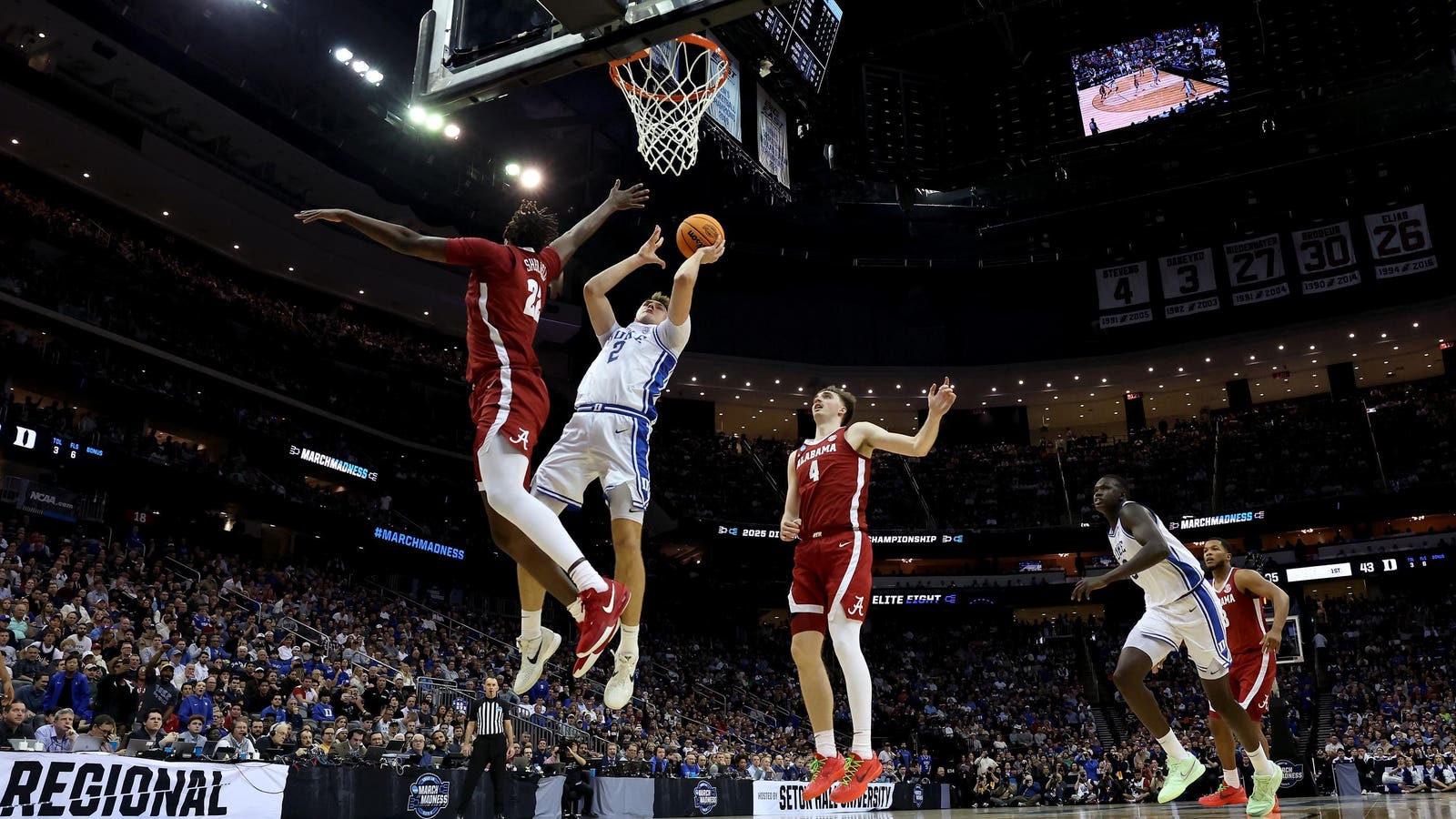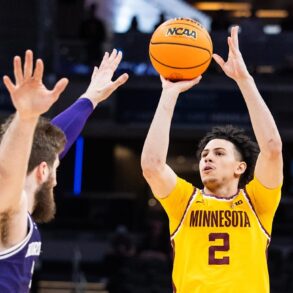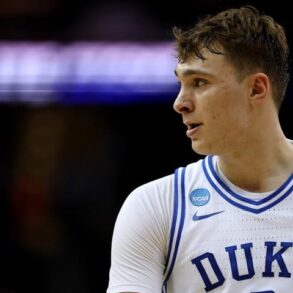
March Madness has earned its reputation for being thrilling, unpredictable, and fiercely competitive. Throughout its illustrious history, the NCAA Men’s Basketball Tournament has witnessed numerous upsets and Cinderella stories. Mid-major programs have made improbable runs, and part of the tournament’s appeal is rooting for the underdog.
In the past twenty years, mid-major programs such as George Mason (2006), Virginia Commonwealth (2011), and Loyola Chicago (2018) have all earned Final Four appearances as 11-seeded teams. There were four 15-seeded teams that reached the Sweet 16: Florida Gulf Coast (2013), Oral Roberts (2021), Saint Peter’s (2022), and Princeton (2023), with Saint Peter’s advancing to the Elite Eight in 2022. Current Boston Celtics General Manager Brad Stevens shocked the college basketball world by leading the Butler Bulldogs to consecutive NCAA championship game appearances in 2010 and 2011, where they were seeded fifth and eighth, respectively. Wichita State played in the Final Four as a 9-seed in 2013. Most recently, Florida Atlantic also made a run to the Final Four as a 9-seed in 2023, ultimately losing to fellow mid-major program and fifth seeded San Diego State in the national semifinals.
To the contrary, this year’s tournament has produced rather conventional results. The Final Four consists of all top-seeded teams, marking only the second time this has happened since the tournament’s expansion in 1985; previously occurring in 2008. The Elite Eight included all four top seeds, three second seeds, and one third seed. For the first time since 1975, the Sweet 16 comprised entirely of teams from power conferences. Although definitive conclusions cannot be drawn from this season’s tournament, many college basketball enthusiasts and participants speculate that the primary factors contributing to the dominance of top-tier teams are recent changes to the NCAA’s transfer portal and the ongoing importance of the NIL (Name, Image, and Likeness) policy.
Impact of the Transfer Portal and NIL
The transfer portal, introduced in 2018, was designed to enhance the transparency of the transfer process and provide student-athletes with greater freedom of choice. A rule implemented in 2021 permitted athletes to transfer once without the requirement of sitting out for a year. Basketball was one of the few sports that required a waiver to complete the transfer process. However, as of 2024, college basketball players no longer need to obtain a waiver from the NCAA. They can now transfer as many times as they wish without having to sit out for a year, as long as they enter the transfer portal within the designated timeframe and meet specified academic requirements. The flexibility of this policy has led to a substantial number of transfers. Since March 24th, more than 1,000 Division I men’s basketball players have entered the transfer portal, with several additional players expected to do so before the closing date of April 22nd.
Since the NCAA adopted an interim NIL policy in 2021, student-athletes are able to financially benefit from their name, image, and likeness. This granted them the autonomy to explore sponsorship opportunities and entrepreneurial ventures to maximize their financial potential. California was the first state to adopt a policy in 2019 by enacting the Fair Pay to Play Act, which allowed college athletes to receive compensation for their name, image, and likeness, effectively pressuring the NCAA to do the same. Currently, there are 32 states that have passed NIL laws, using California’s legislation as a model.
An NIL valuation represents the estimated market worth of a student-athlete, taking into account various factors such as social media presence, on-court performance, and media exposure. This valuation is used to predict the potential earnings of the individual. As of March 2025, the highest NIL valuation for a college basketball player belongs to Duke’s freshman forward Cooper Flagg, who is estimated to have a roster value of $4.8 million. Duke, one of the clear favorites before the tournament began, will play in the Final Four next weekend.
Nearly two years ago, Lamont Butler #5 of the San Diego State Aztecs celebrates with teammates after … More
Are Mid-Majors Now Developmental Programs?
Although college sports have long been characterized by a divide between the ‘haves and have nots’, mid-major basketball programs encounter even greater challenges competing within this evolving landscape due to limited resources and geographical constraints. Recently, several elite college basketball players have transferred from successful mid-major programs to power conference teams. Among them is the talented forward Johni Broome, who previously played for Morehead State and is now a contender for the Naismith Player of the Year award with Auburn. A few other notable mid-major conference transfers to power conference teams include Walter Clayton Jr. to Florida (from Iona), Mark Sears to Alabama (from Ohio), Chaz Lanier to Tennessee (from North Florida), J.T. Toppin to Texas Tech (from New Mexico), and Lamont Butler Jr. to Kentucky (from San Diego State). This suggests that mid-major programs are becoming a minor league structure of sorts, preparing players to transition to more prominent programs.
As previously discussed, a major shift that impacts mid-major programs is the NIL opportunities for players. In the past, top prospects might leave a power conference program in order to showcase their talents with enhanced playing time at a mid-major school. However, the financial resources available today are so significant that prospects are willing to sit on the bench for power conference schools. Oakland University’s head coach, Greg Kampe, the longest-tenured head coach in men’s college basketball, led the Golden Grizzlies to a monumental upset over the 3-seeded Kentucky in last season’s NCAA tournament. Oakland lost its top forward, Trey Towsend, to Arizona afterward. Coach Kampe recently told Yahoo Sports, “He’s making 20 times what I could give him this season,” and reiterated the challenges mid-major programs face in retaining talent.
Is College Basketball Better or Worse?
There are differing perspectives on this subject. The counterargument is that college basketball is better positioned for the future with NIL agreements, as they increase the likelihood of players remaining in college to earn income. Major basketball brands from conferences, such as the ACC and SEC, have the opportunity to strengthen their rosters by recruiting players from mid-major programs. Many believe this strategy fosters brand recognition, boosts revenue, and contributes to a more competitive landscape. Regardless, various fans, athletes, coaches, administrators, and media personalities hold strong opinions on the current direction of college sports.
The athletic success of a smaller university can evoke a sense of civic pride. Many alumni from mid-major universities take pride in witnessing their alma mater upset a top-ranked team or qualify for the NCAA tournament. Whether fans support a favored team or an underdog, most issues come down to economics. College basketball has entered a new era, for better or for worse.
This post was originally published on this site be sure to check out more of their content.









